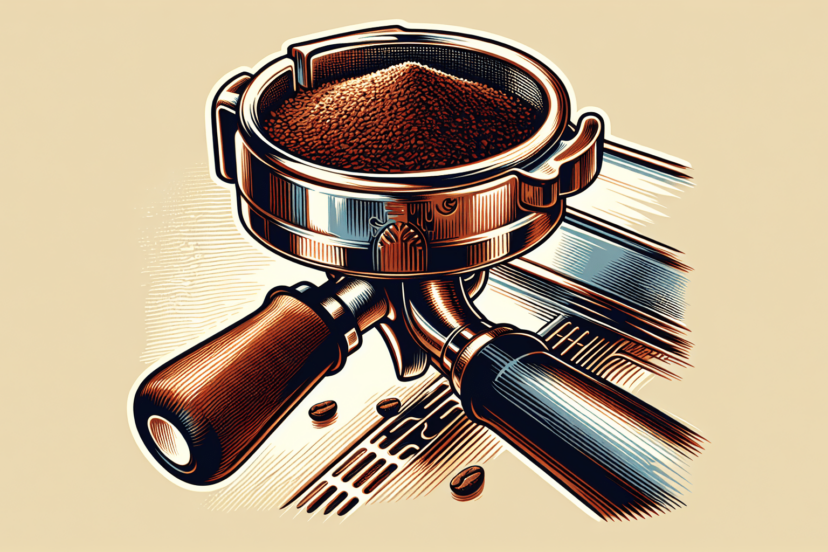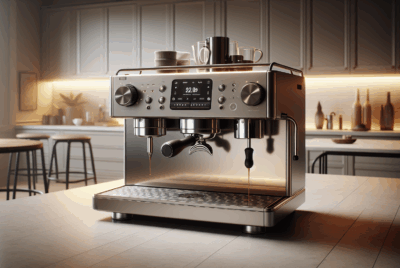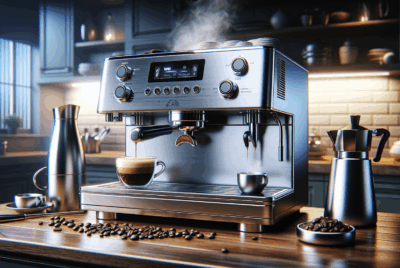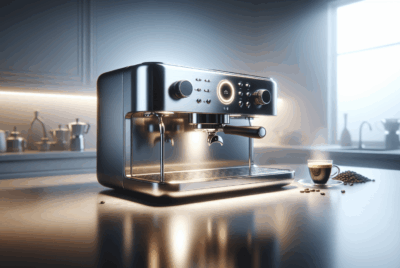Exploring Essential Espresso Machine Parts for Better Brews
As an Amazon Associate, I earn from qualifying purchases, at no additional cost to you. Disclaimer
Have you ever wondered what makes a great cup of espresso? If you’re like many coffee lovers, you’ve probably been curious about how your favorite cafe manages to produce such consistently delicious brews. The secret isn’t just in the coffee beans or the barista’s skills. A significant part of the magic lies in the espresso machine itself and its various components. Understanding these essential parts can empower you to make better brews at home or appreciate the craftsmanship that goes into your daily caffeine fix.
Click Here to Start Your Coffee Journey
Understanding the Basics of an Espresso Machine
To truly appreciate the intricacies of espresso machines, it’s important first to understand the basics. An espresso machine is designed to force hot water through finely-ground coffee under high pressure. This process extracts rich flavors and produces a dense, creamy beverage topped with a layer of crema.
What is Pressure and Why Does It Matter?
Pressure is a critical component in espresso making. This force compels the water through the compacted coffee grounds, extracting flavors and oils essential for a rich espresso. Typically, the ideal pressure for brewing espresso is around 9 bars. Understanding this helps you see why certain machine parts must be maintained and calibrated properly.
The Role of Water Temperature
Water temperature is another crucial factor in espresso brewing. Ideally, the water should be between 195°F to 205°F. This range allows for maximum flavor extraction without burning the coffee, which can lead to bitter results.
Key Components of an Espresso Machine
Now that we’ve established the fundamentals of espresso-making, let’s turn our attention to the key components of an espresso machine. Each part plays an integral role in achieving the perfect brew.
The Boiler
The boiler in an espresso machine is responsible for heating water to the right brewing temperature. Some machines have a single boiler with a heat exchanger, while others come with dual boilers to manage both brewing and steaming.
Differences between types of boilers:
| Boiler Type | Features |
|---|---|
| Single Boiler | Simple design, heats water for both brewing and steaming, less expensive |
| Heat Exchanger | Allows simultaneous brewing and steaming, more efficient than single, slightly pricier |
| Dual Boiler | Separate boilers for brewing and steaming, consistent temperature, more professional |
The Pump
The pump is what creates the pressure needed to push water through the coffee. There are two main types of pumps: rotary and vibration.
- Rotary Pumps are quieter, offer consistent pressure, and are often found in commercial machines.
- Vibration Pumps are more common in home machines due to their lower cost and smaller size.
Group Head
The group head is the part where water meets coffee. It holds the portafilter and directs hot water through the coffee puck. A well-made group head ensures even distribution of water and plays a crucial role in flavor extraction.
Portafilter
This is the handle that holds the coffee grounds during brewing. A properly maintained portafilter is essential for making sure the coffee is tamped evenly, which affects the final brew quality.
The Steam Wand
The steam wand is used to froth and steam milk for beverages like cappuccinos and lattes. It expels steam at high temperatures, heating the milk and creating microfoam for that velvety texture.
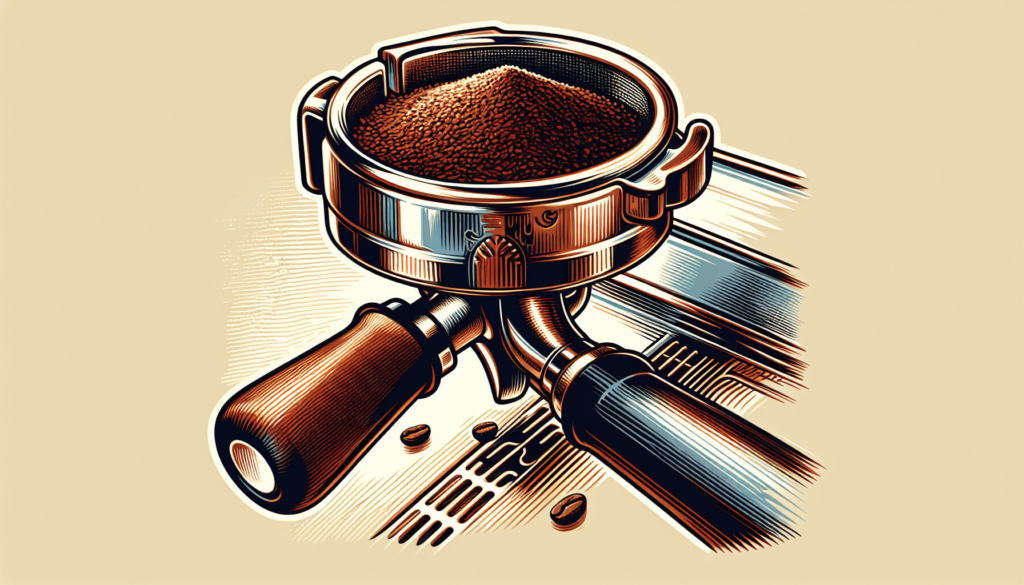
Click Here to Discover Coffee-Making Tips
Maintenance and Troubleshooting
Even the most advanced espresso machines require regular maintenance and occasional troubleshooting to ensure they function properly and produce the best possible espresso.
Cleaning Your Machine
Regular cleaning is crucial for maintaining espresso machine performance. This involves cleaning the group head, portafilter, and steam wand after each use. Descaling every few months, especially in areas with hard water, can prevent mineral buildup that can affect both taste and machine longevity.
Diagnosing Common Problems
Despite careful maintenance, issues can arise. Understanding common problems can help you quickly troubleshoot and fix your machine.
Low Pressure
If your espresso shots are taking too long to brew, or not brewing at all, you might be experiencing low pressure. This can be caused by a clogged group head or a malfunctioning pump.
Temperature Issues
Inconsistent water temperature can lead to sour or burnt-tasting espresso. Ensure your machine’s thermostat is functioning correctly and check for any scaling in the water lines that might be impacting temperature control.
Purchasing a Home Espresso Machine
If you’re considering purchasing an espresso machine for home use, you’ll want to weigh your options carefully to choose the right type for your needs.
Understanding Your Needs
Do you mainly want shots of espresso or are you interested in milk-based drinks? If you enjoy cappuccinos or lattes, look for a machine with an efficient steam wand or dual boiler system.
Setting a Budget
Espresso machines can range from budget-friendly to professional-grade. Consider how often you’ll use your machine and what features are essential for your brewing style before making a purchase.
Key Features to Look For
Here are some features that distinguish espresso machines:
| Feature | Description |
|---|---|
| Size | Consider available counter space and storage capability. |
| Boiler Type | Choose between single, heat exchanger, or dual boilers based on your usage expectations. |
| Built-in Grinder | Integrated grinders can save space and increase convenience, though quality and adjustability can vary. |
| Control Features | Machines can have manual, semi-automatic, or fully automatic controls for varied precision and convenience. |
Popular Machine Brands
There are many reputable brands to choose from, each with its unique strengths and target market.
- Breville: Known for user-friendly machines with high-quality components.
- De’Longhi: Offers a wide range of machines, often recognized for value and versatility.
- Gaggia: A classic brand known for durable, reliable espresso machines.
- Rancilio: Offers more professional-grade options suitable for serious espresso enthusiasts.

Click Here to Master Coffee at Home
Making Better Brews
With an understanding of your espresso machine and its parts, you’re better equipped to create superb espresso shots and espresso-based drinks. However, your journey doesn’t end with having a good machine; technique plays a vital role.
Perfecting Espresso Shots
The quality of espresso shots depends on a few critical factors, including grind size, dosing, and tamping.
Grind Size
The right grind size should be fine but not so fine that it clogs your machine. Different coffee beans may require slight adjustments in grind size to achieve the perfect shot.
Dosing and Tamping
Consistency is key when it comes to dosing and tamping. You should aim for the same amount of coffee and apply even pressure when tamping to ensure water flows through evenly.
Crafting Milk-Based Espresso Drinks
If you love milk-based drinks like lattes and cappuccinos, mastering your steam wand technique is essential for creating delicious, cafe-quality beverages.
Steaming and Frothing Milk
To make the perfect microfoam, position your steam wand just below the surface of the milk and introduce a small amount of air while heating. Once you achieve a creamy texture, gently swirl the milk to remove larger bubbles.
Pouring Techniques
Pouring milk into your espresso requires practice and precision, particularly if you’re keen on pouring latte art. Start with the basics, and with time, you’ll advance to creating beautiful designs.
Embracing the Espresso Experience
Exploring the world of espresso can be both rewarding and enjoyable. Whether you’re buying your first machine or trying to improve your understanding of espresso mechanics, knowledge is your best tool. This way, each brew you make or enjoy brings satisfaction, tinged with the joy of craftsmanship and the love of good coffee.
With these insights, you now wield the understanding to identify, utilize, and possibly even repair your espresso machine’s most important parts. In doing so, your pathway to better brews becomes clearer, bit by bit, like the first trickles of golden espresso from your machine—signaling both a beginning and a culmination of artistry, science, and the sheer pleasure that each delightful sip can bring.

